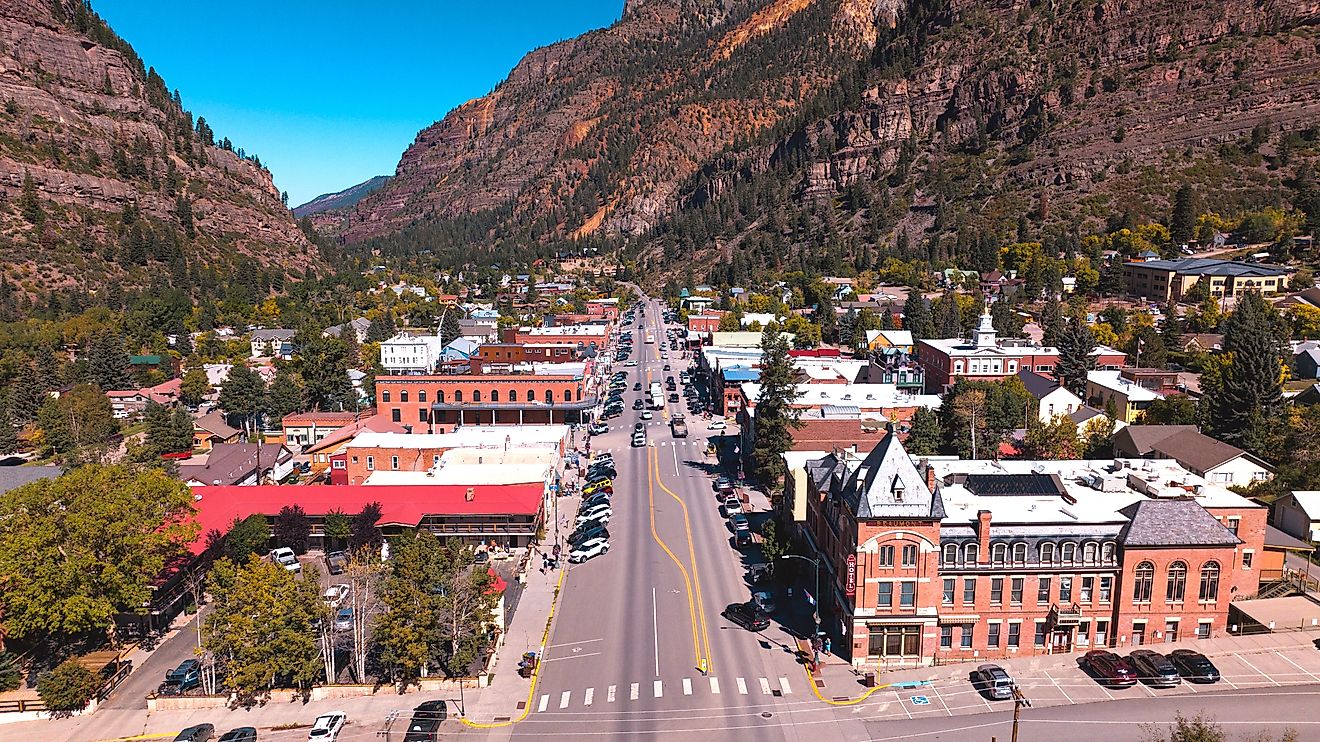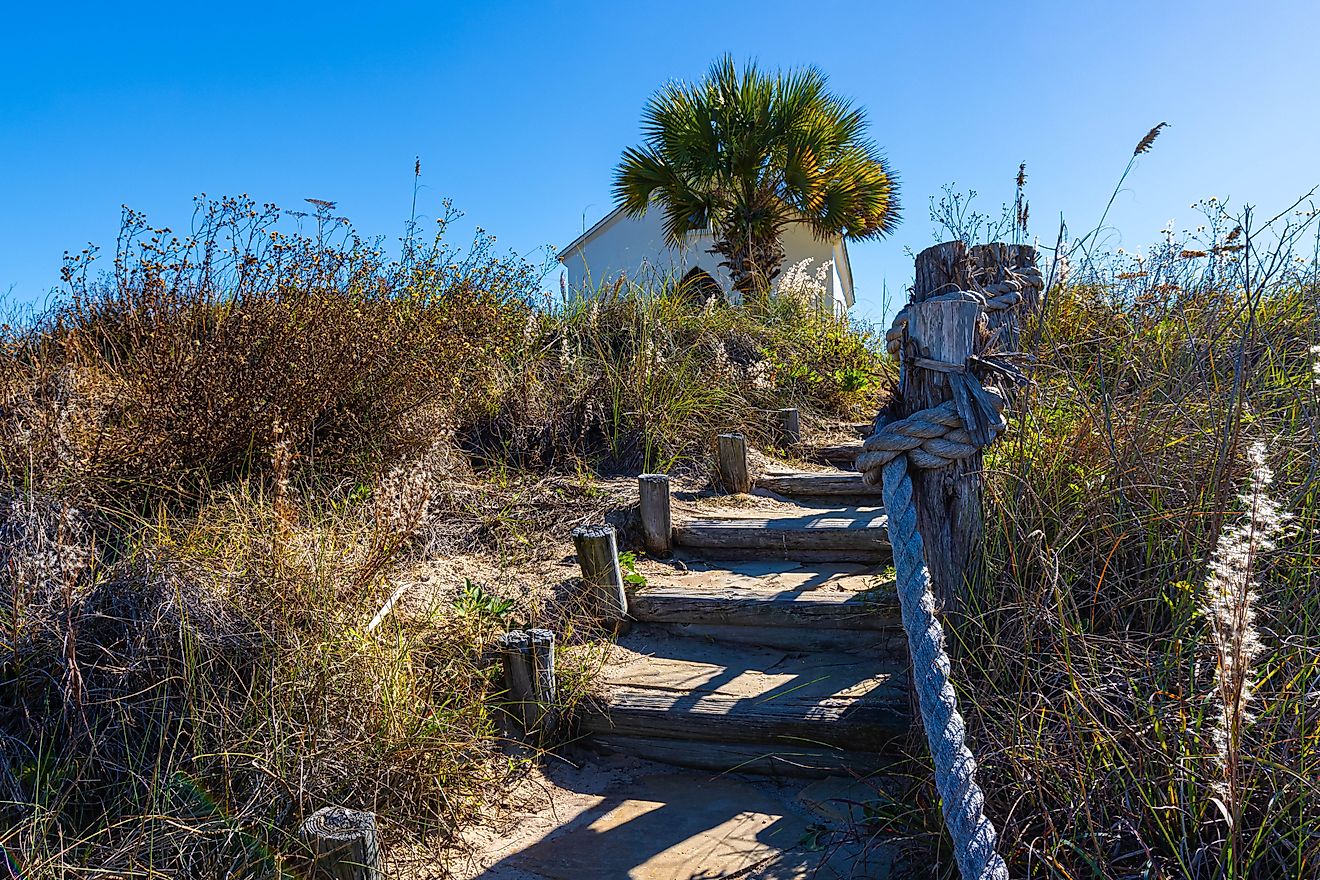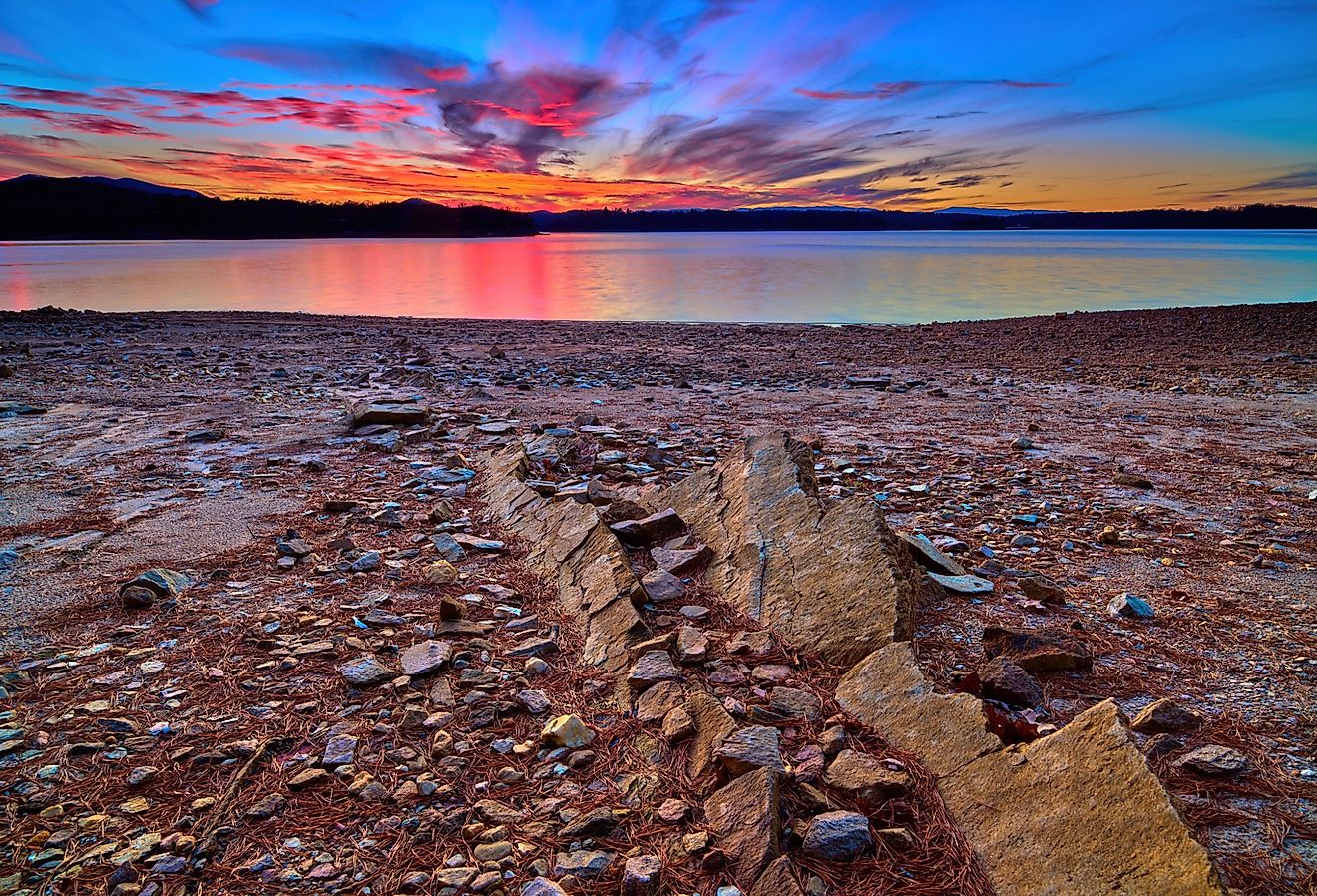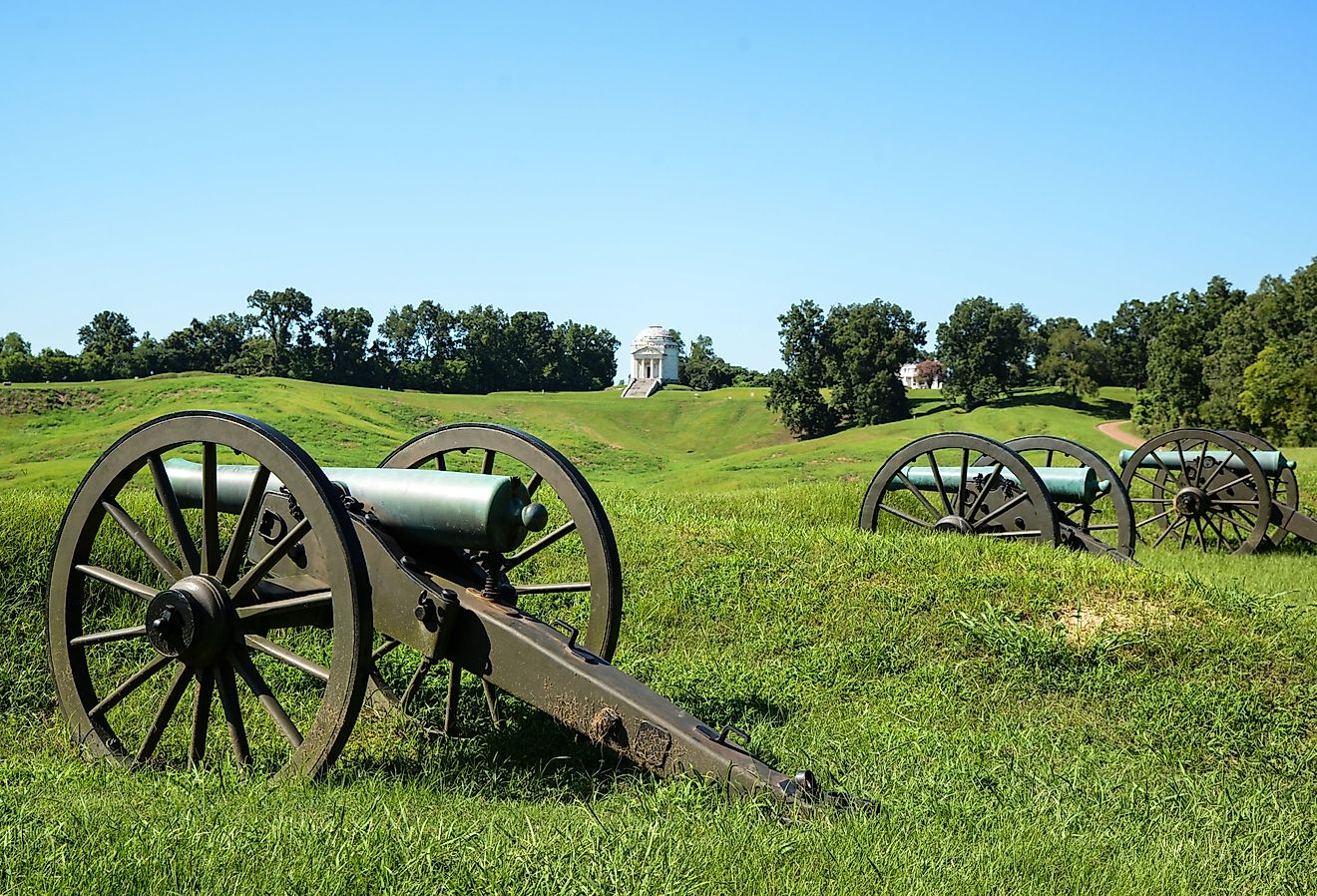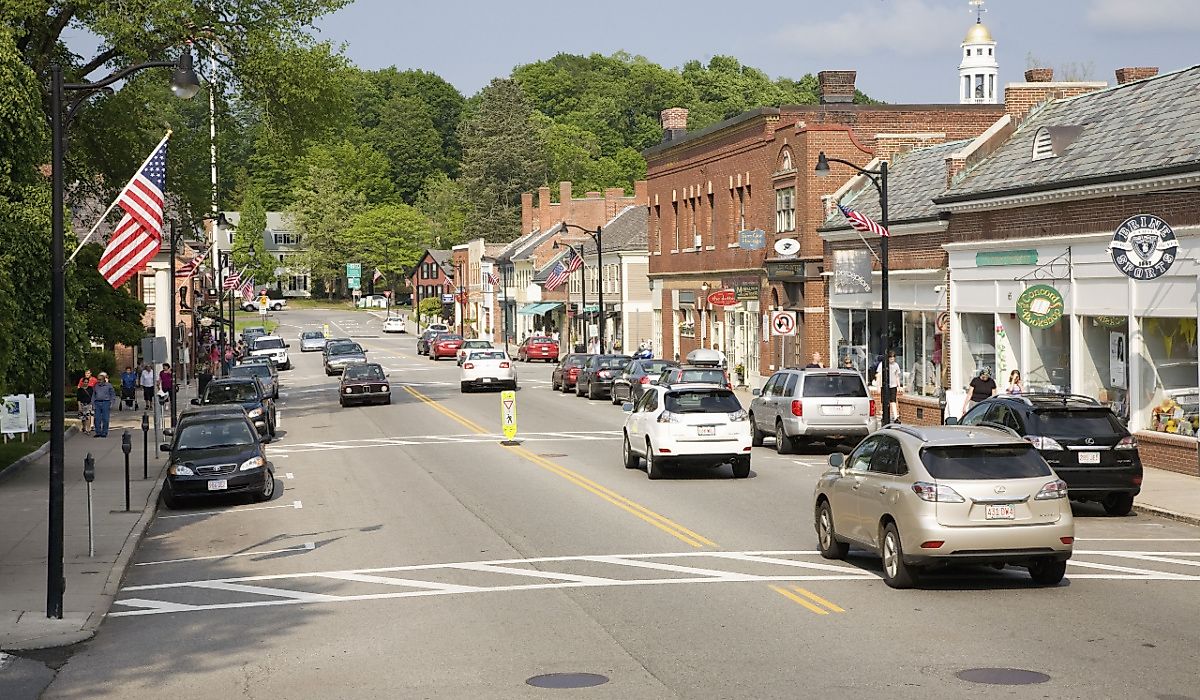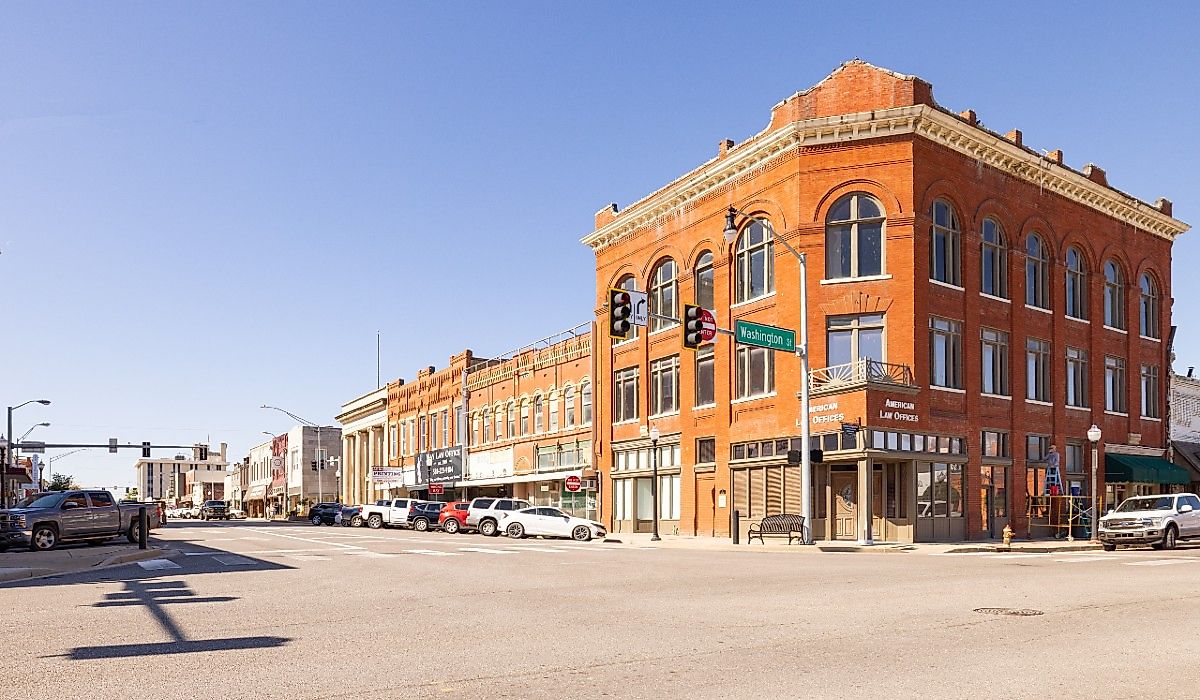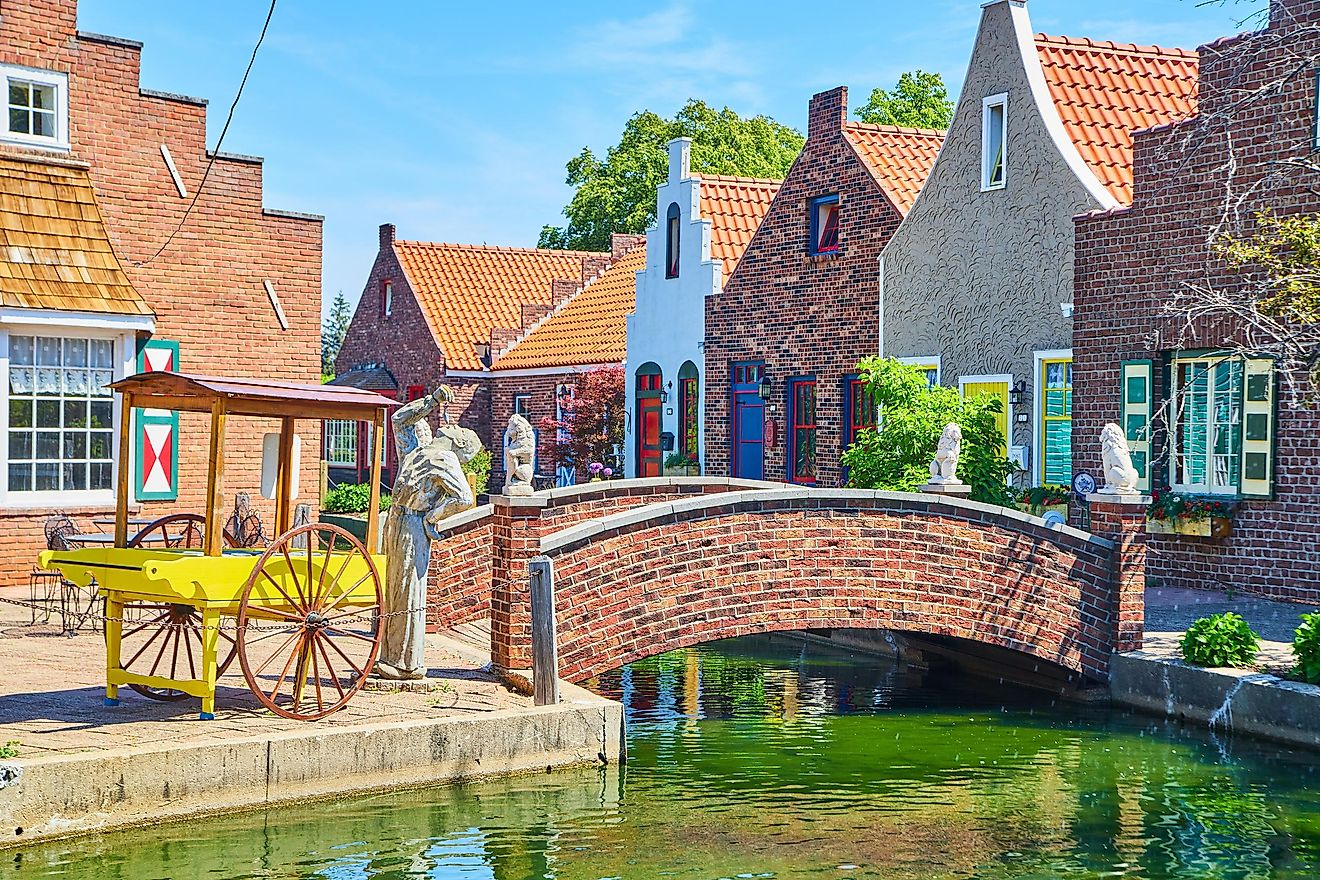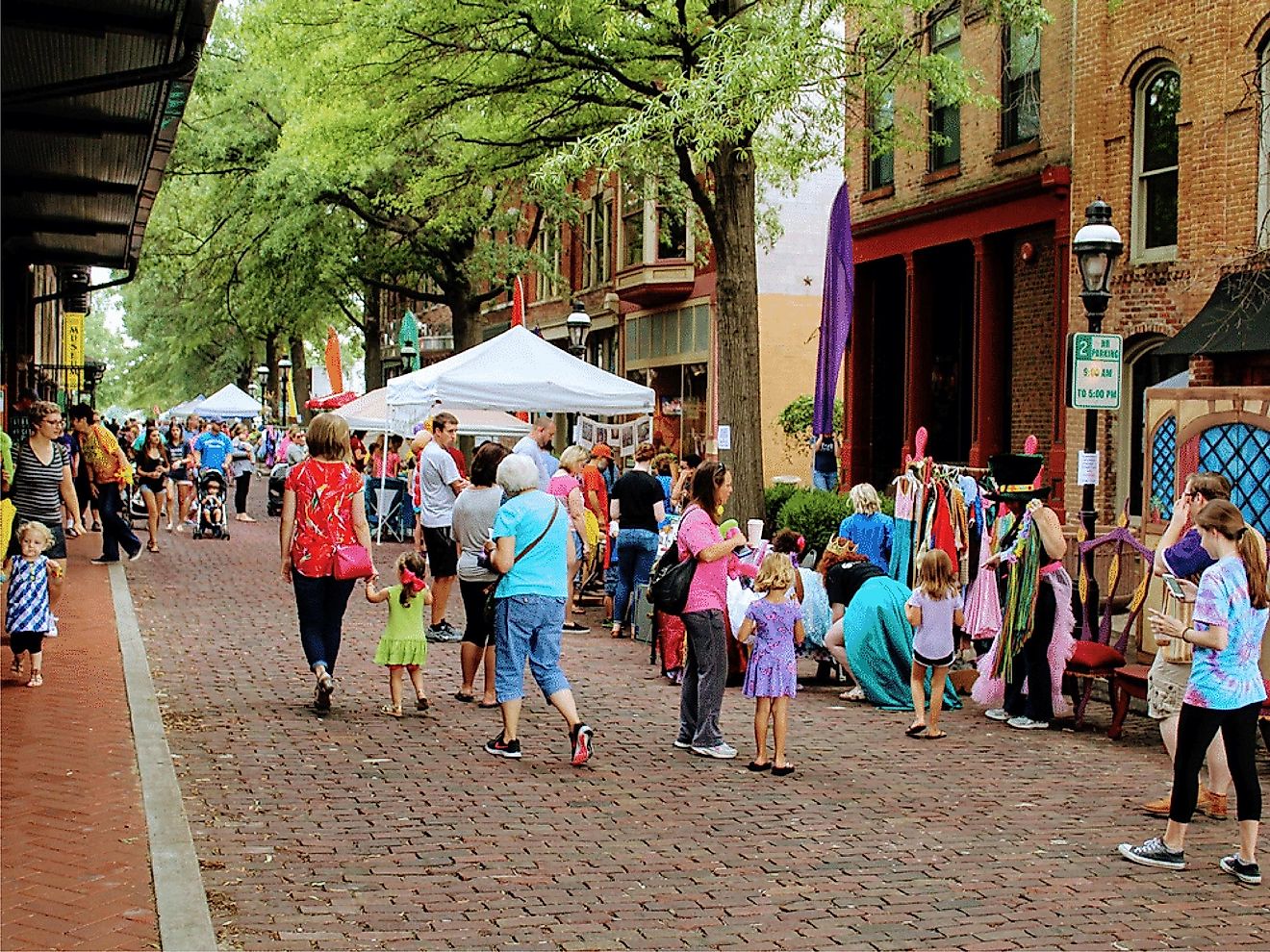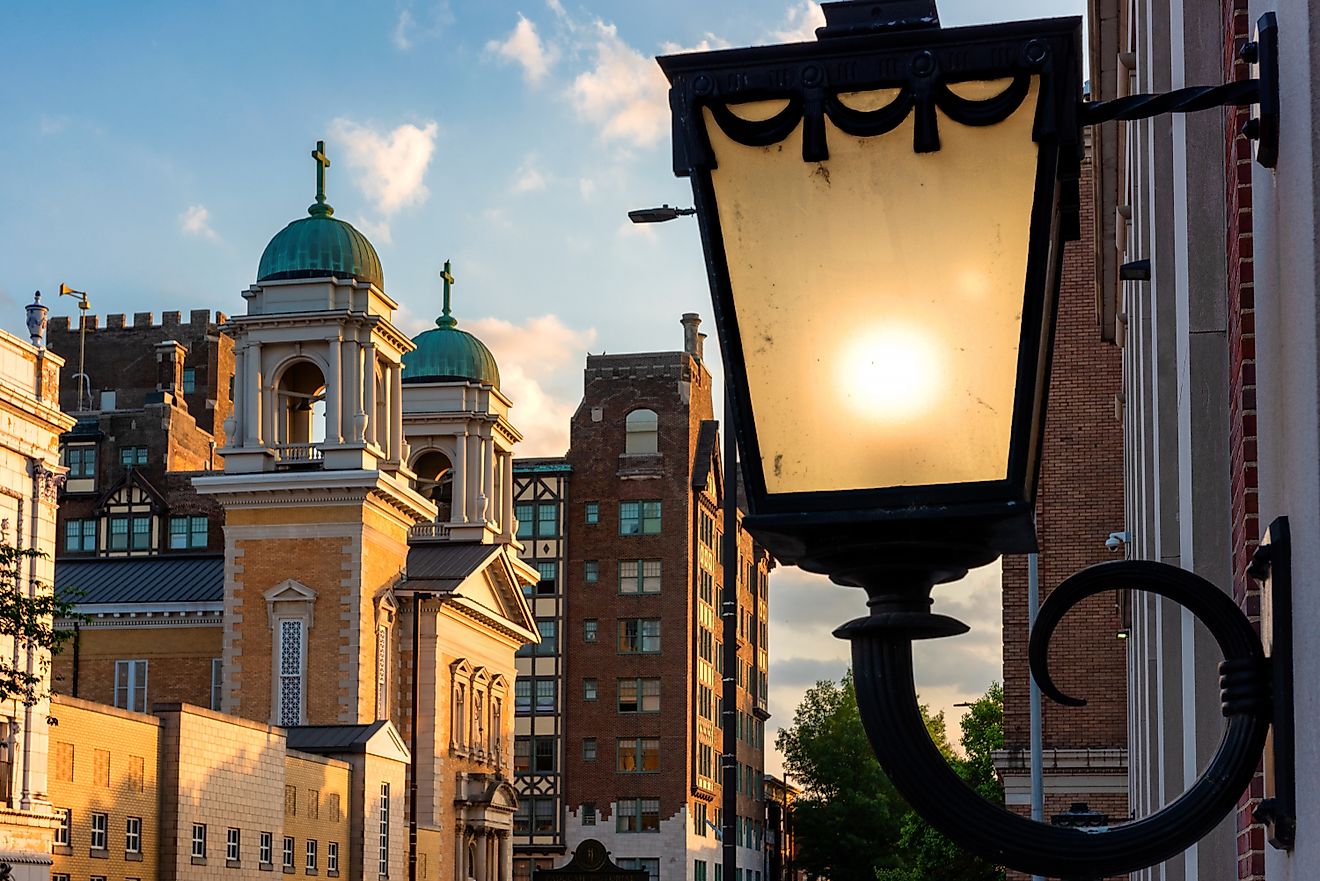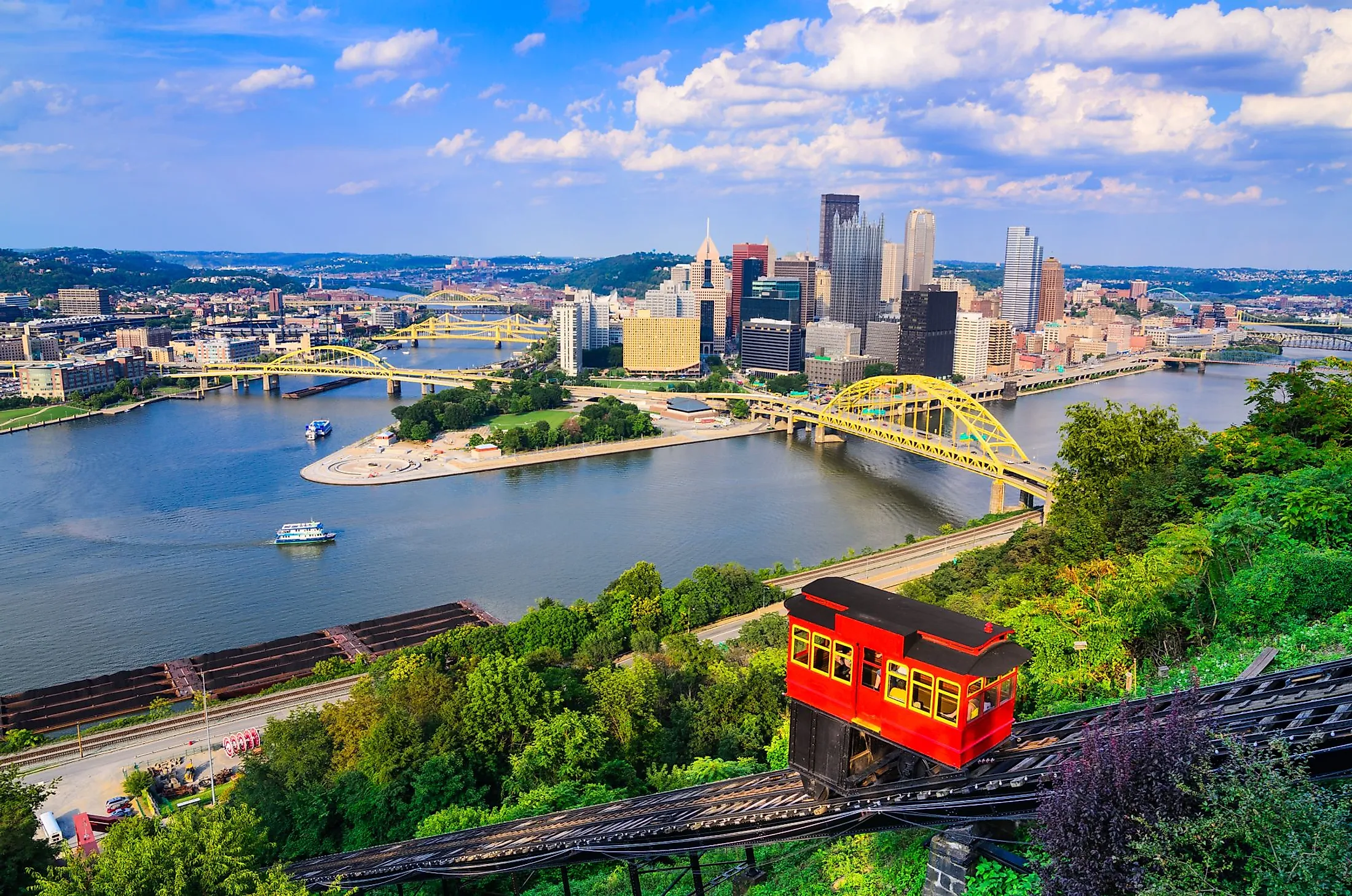
Which US City Is Known As “The City Of Bridges”?
Rising from a landscape once carved only by rivers, creeks, and wooded ravines, Pittsburgh, Pennsylvania, aptly nicknamed the "City of Bridges", now links its hillsides with 446 spans, three more than Venice. When the first European settlers arrived in the early 1700s, navigating the countless waterways and steep terrain proved arduous; hastily built wooden bridges soon complemented the rough roads and river ferries. Over three centuries, steel, concrete, and graceful suspension designs replaced those early structures, knitting together neighborhoods on opposite banks of the Allegheny, Monongahela, and Ohio rivers. Centered on their confluence, Pittsburgh’s "Golden Triangle" business district, the city has evolved into an industrial-tech hub ringed by green parks and forested ridges. Its metropolitan area, which includes Aliquippa, New Kensington, McKeesport, Washington, and Wilkinsburg, counted about 2.4 million residents in 2025, while the city proper housed roughly 303,000, all benefitting from the bridges that continue to define and connect this uniquely challenging terrain.
Early History Of Pittsburgh
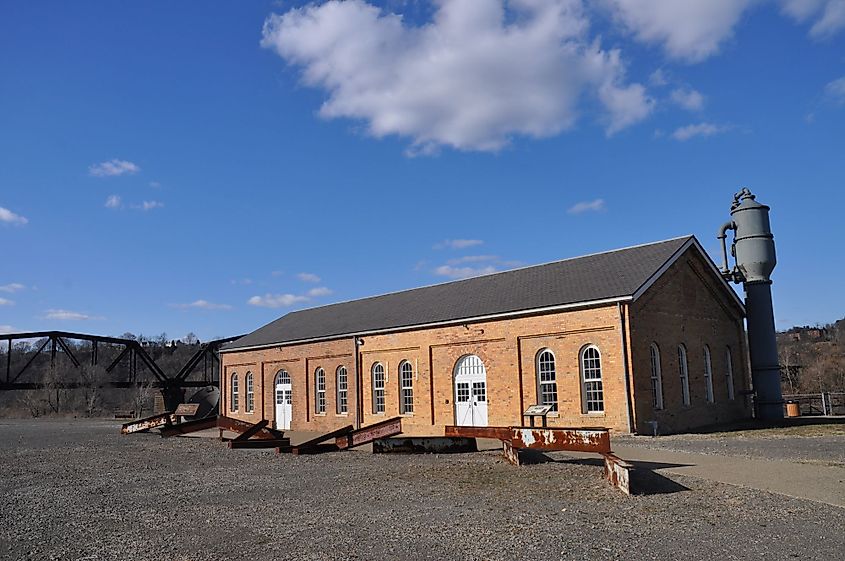
Algonquian- and Iroquoian-speaking peoples first occupied the meeting point of the Allegheny and Monongahela Rivers. During the mid-eighteenth-century contest between France and Britain for the Ohio Country, the French constructed Fort Duquesne on the point. General John Forbes captured the site in 1758 and began building Fort Pitt (1759-1761), named for British statesman William Pitt the Elder, thereby securing British control of the Ohio River headwaters. After Pontiac’s War ended in 1763, British settlers streamed in, and surveyor John Campbell laid out Pittsburgh’s street plan in 1764 around the fort, today’s "Golden Triangle."
The town soon became a key outfitting post for westward migrants after the American Revolution. In 1792, ironmaster George Anshutz erected the region’s first blast furnace, launching an industry that earned Pittsburgh the nickname “Iron City” by mid-century. Completion of the Pennsylvania Main Line Canal and the Allegheny Portage Railroad in 1834 integrated the settlement into national trade networks, while the Great Fire of 1845 destroyed 24 downtown blocks. Abundant natural resources and successive waves of European immigrants after the Civil War transformed Pittsburgh into a global centre of iron and, later, steel production.
Modern History Of Pittsburgh
By the turn of the century, the population reached 321,616 and continued to grow steadily through World War II. The war benefited the "Steel City's" economy but came at the cost of making Pittsburgh the epitome of a grimy, polluted industrial city. The population of 675,000 in 1950 declined to almost half by the end of the century, with a primary ethnic makeup of European descendants and one-fourth being African Americans. An extensive redevelopment program reduced smoke pollution, established flood prevention and sewage disposal, and made Pittsburgh the first city in the country to generate nuclear-powered electricity in 1957. However, due to foreign competition and decreased demand, the steel industry virtually disappeared by the early '80s, causing many surrounding towns to experience drastic failures due to unemployment. Pittsburgh's diversified economy focused on light industries such as metalworking, chemicals, and plastics, as well as high technologies like computer software, robotics, biochemical, and environmental technologies. The demand also fostered growth in industrial research laboratories and the service sector, while Pittsburgh firmly established itself as the nation's largest inland port, continuing to lead in transportation.
Culture And Education In Pittsburgh
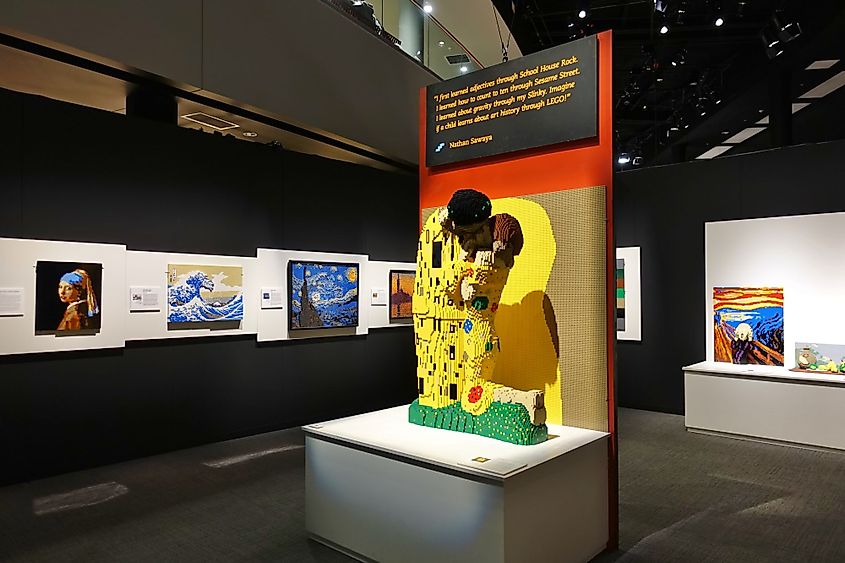
The Golden Triangle was rebuilt to include the Mellon Arena, Point State Park, the Gateway Center, and the David L. Lawrence Convention Center, along with their subcomponents. The University of Pittsburgh was chartered in 1787, with more educational institutions opening over the next two centuries. Central to cultural life, the Carnegie Museums of Pittsburgh comprises an umbrella organization overseeing the fine arts and natural history museums (1895), the Carnegie Science Center (1991) with its Henry Buhl, Jr., Planetarium and Observatory (1939), and the Andy Warhol Museum (1994). The Carnegie Library of Pittsburgh contains more than 3.3 million volumes, along with the Carnegie Music Hall. The Pittsburgh Symphony Orchestra performs at a former movie theater that has been transformed into Heinz Hall.
The Bridges
Waging a massive road and bridge campaign to meet the needs of the region’s booming population throughout the 20th century, the development of the Interstate Highway System consisted primarily of steel bridges of various designs, including suspension, cantilever, and arch. The hundreds of Pittsburgh bridges connect residents, neighborhoods, and other areas while enhancing the city’s distinctly beautiful skyline.
The first bridge to span any of the three rivers in the Pittsburgh area was the wooden Monongahela Bridge, built in 1818. Destroyed by the Great Fire of 1845 in under ten minutes, it was replaced by a new wire rope suspension bridge designed by John Roebling, the future designer of the Brooklyn Bridge. The additional weight from increased traffic created a precarious situation for its durability, leading to the closure and replacement of the bridge with the Smithfield Street Bridge.
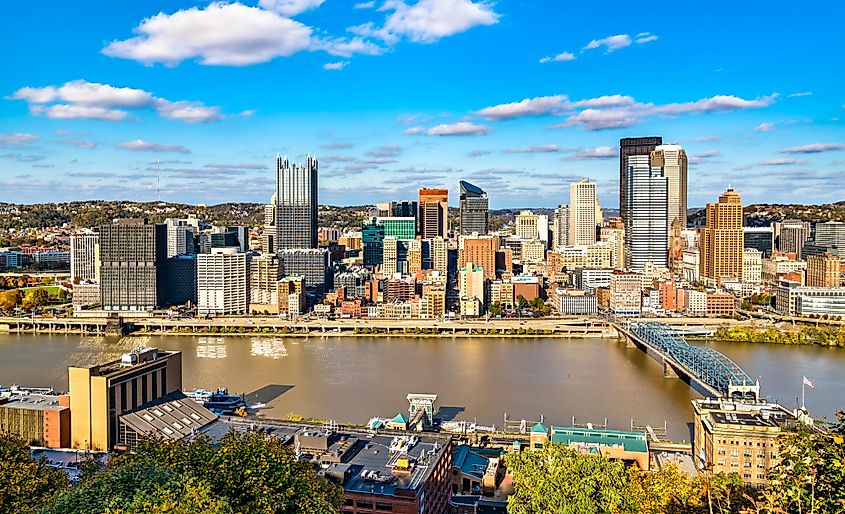
The recognizable Smithfield Street Bridge was erected in 1894, spanning the Monongahela River at Smithfield Street. Today, it stands as the oldest through-truss bridge in the United States and has undergone many cosmic and cosmetic changes since then. The portals with arches, designed by the City Architect, Stanley L. Roush, incorporated grotesques of men into the original downstream half in 1915. The bridge breathed a sigh of relief in 1934 when its wrought-iron floor was replaced with aluminum, which significantly lightened the dead weight, along with replacing its iron railings with plain hollow aluminum ones.
The Monongahela Connecting Railroad Bridge, also known as Hot Metal Bridge, was erected on April 27, 1887, over the Monongahela River between the Jones & Laughlin Blast Furnace and Mill. It primarily served to transport molten iron from the Jones & Laughlin Steel Corporation's Eliza Furnaces to the Bessemer Converters and open hearths at Jones & Laughlin's South Side mills across the river. Established by ordinance, gold and black became Pittsburgh's official city colors in 1899, with several downtown bridges being "sun-kissed" by painters.
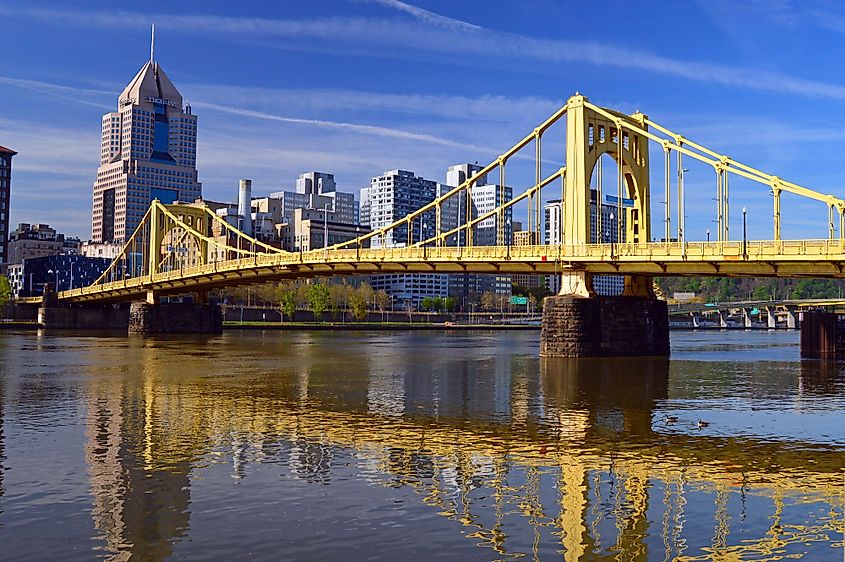
The Sixth Street Bridge (1892-1927), designed by Theodore Cooper, replaced the second Sixth Street Bridge (1859-1892), which was designed by John A. Roebling, spanning the Allegheny River. The fourth Sixth Street Bridge then took its place with a self-anchored suspension design that received an award in 1929 from the American Institute of Steel Construction for its innovative features. Renamed in honor of the late Pittsburgh Pirate, it is now called the Roberto Clemente Bridge, part of the famous trio. Reserved for fans traveling to PNC Park for a Pirates game, it is closed to all vehicular traffic on game nights.
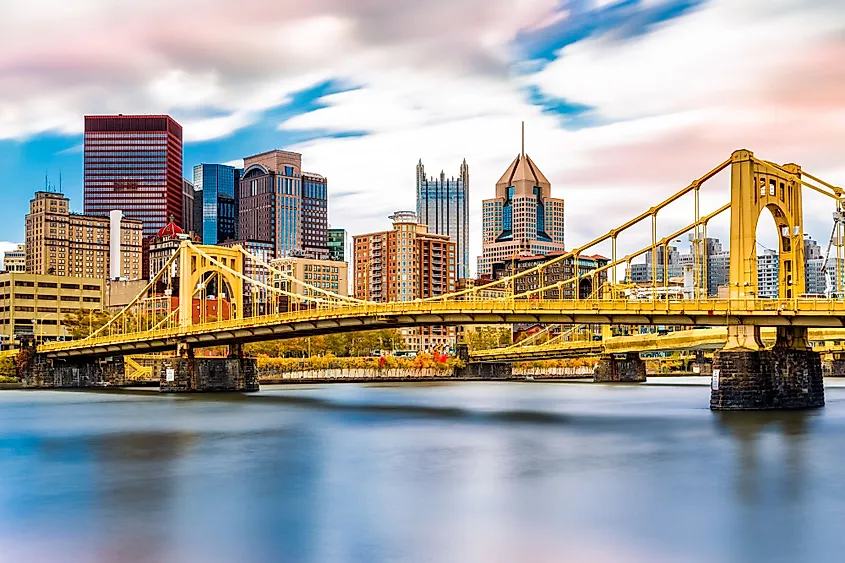
The Ft. Duquesne Bridge faced significant delays in 1963, earning the nickname "Bridge to Nowhere." The world-famous trio of identical bridges includes the Roberto Clemente, Andy Warhol, and Rachel Carson suspension bridges, which carry traffic across the Allegheny River to the North Side of the city. The 7th Street Bridge was renamed the Andy Warhol Bridge in honor of the Warhol Museum's 10th anniversary in 2005, retaining its golden color. In 2006, the 9th Street Bridge was renamed the Rachel Carson Bridge to honor the Pittsburgh-born author and founder of the modern environmental movement.
The Hot Spots In Pittsburgh
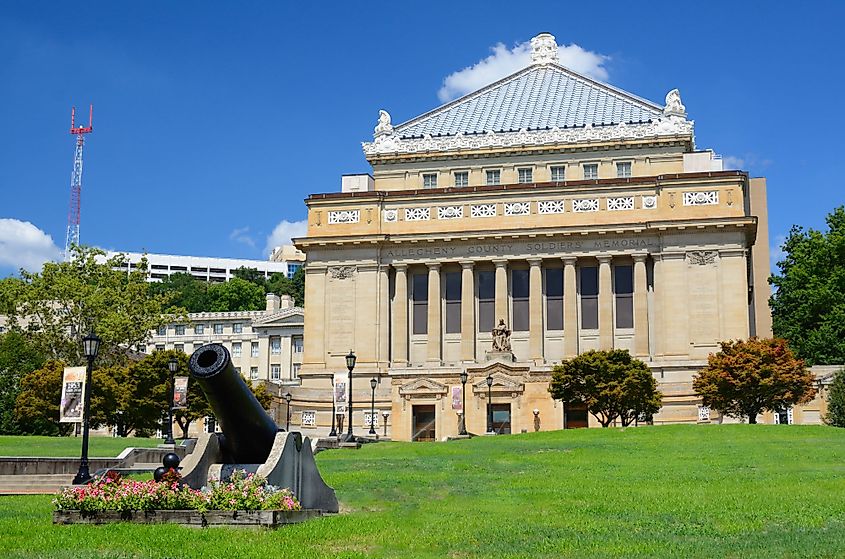
The astounding array of museums includes everything from the Bicycle Heaven Museum and Shop, which showcases the world's most extensive collection (approximately 6,000) of bicycles, to Soldiers & Sailors Memorial Hall & Museum. Just east of Downtown Oakland, it is home to the nation's most significant memorial honoring all military personnel throughout recorded history. The Andy Warhol Museum, situated in a restored warehouse and distribution center, is the North Museum's largest museum dedicated to a single artist. Located directly across from the Andy Warhol Bridge, it features an extensive permanent collection of art and archives by Pittsburgh-born popular art and film icon Andy Warhol. Nearby, the Mattress Factory is an inspiring contemporary art museum that began as a pioneer of site-specific installation art, with permanent installations by Yayoi Kusama, James Turrell, and Greer Lankton, among others.
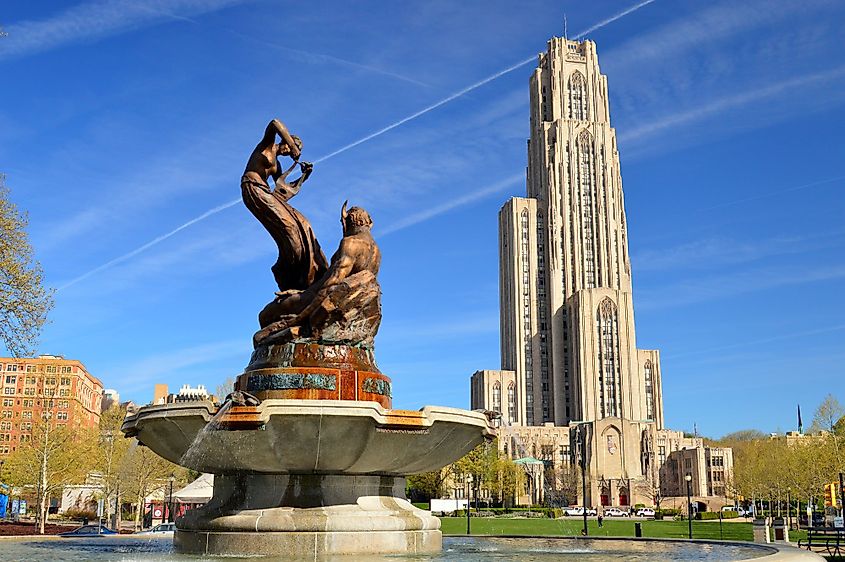
The Cathedral of Learning stands as the tallest educational building in the nation and the second tallest worldwide. This 42-story skyscraper serves as the university's focal point, featuring 31 Nationality Rooms on its first and third floors. Each room represents a different ethnic group that has settled in Pittsburgh, filled with memorabilia reflecting each culture. The city’s iconic historical inclines, the Duquesne Incline and the Monongahela Incline, offer funicular-like rides to the summit of Mount Washington, providing breathtaking views of the Downtown skyline along the journey. From the top, one can see the entire Allegheny, Monongahela, and Ohio rivers, along with numerous neighborhoods, all laid out before them.
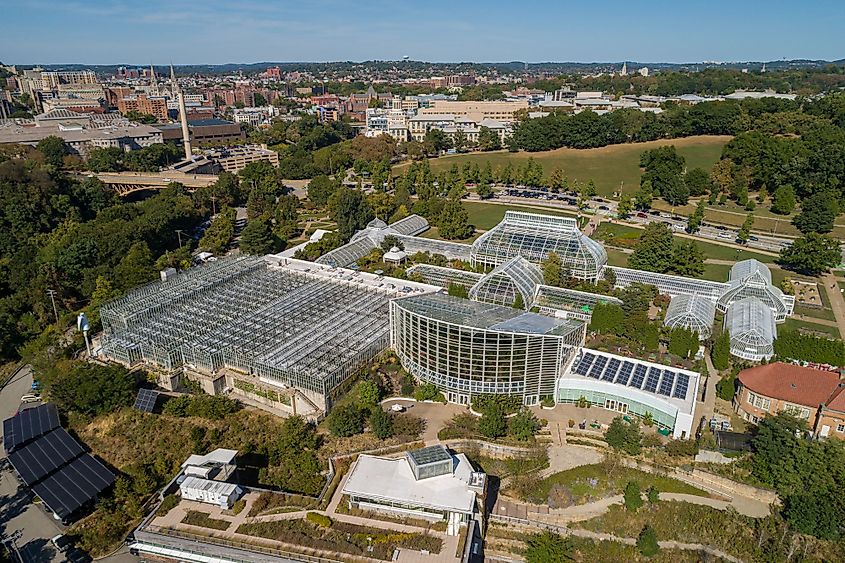
The Phipps Conservatory and Botanical Gardens, established in 1893, feature extensive greenhouses covering 2.5 acres (1 hectare) and are among the city's most picturesque spots for a leisurely stroll or relaxation. The city's zoo, which includes an aquarium, is located in the northeastern Highland Park neighborhood. Additionally, the national Aviary is the only independent indoor non-profit zoo in the country, home to over 500 birds from more than 150 species worldwide. Its walk-through habitats create a unique opportunity for visitors to closely interact with and hand-feed species that are seldom found elsewhere in the world.
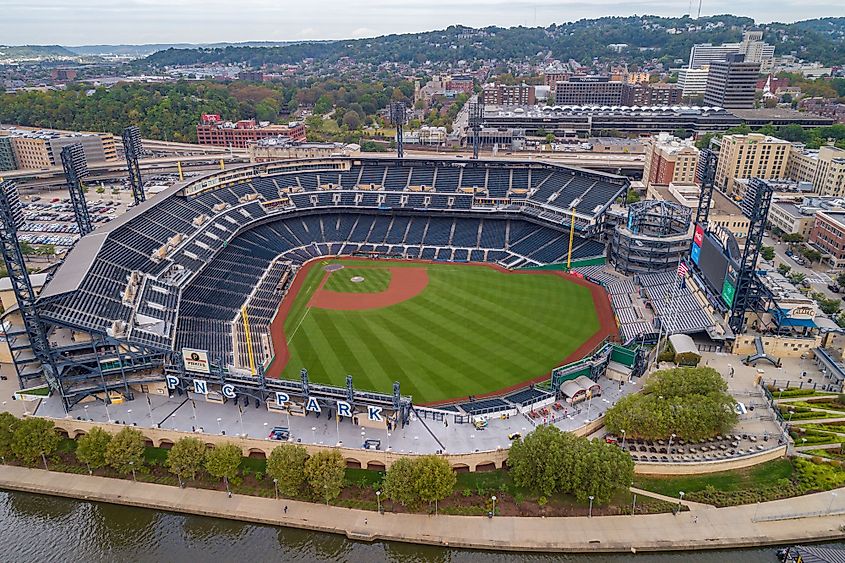
PNC Park hosts the Pirates, Pittsburgh's professional baseball team, while Heinz Field is home to the Steelers, the city's professional football team. These two modern sports venues, which opened in 2001, are located on the north bank of the Allegheny River, directly across from the Golden Triangle. The Carnegie Science Center, situated at the junction of the Allegheny and Ohio rivers, features the world's largest permanent robotics exhibition, Roboworld, along with the USS Requin, the first Radar Picket submarine of the United States Navy. For additional entertainment, an amusement park is located to the southeast in West Mifflin, alongside summer riverboat tours on Pittsburgh's waterways and the iconic Kennywood amusement park.
Urban Life In Pittsburgh
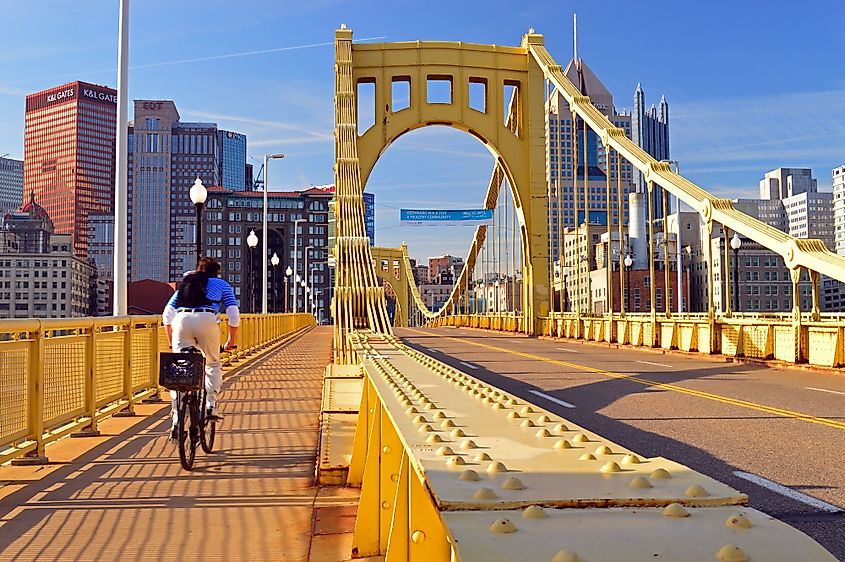
Although Pittsburgh is a sprawling city, it offers numerous outdoor activities for the active lifestyle, beloved by its residents on both land and water, including exceptional kayaking on its three rivers. The stunning 24-mile riverfront trails feature scenic options for biking, hiking, and walking, while the 150-mile Great Allegheny Passage (GAP trail) presents a biking paradise. This trail stretches from the C&O Canal Towpath to Washington, D.C. Visitors can select a segment of the trail or opt for a relaxed ride along the Monongahela River with “The Golden Triangle Bike,” where bicycles can be rented within the city.
The city’s captivating layout offers a unique way to exercise while discovering Pittsburgh on foot, highlighted by the 446 bridges that create a bucket list just waiting to be explored. You can hunt for landmarks, including the last wooden brick street in the city, Roslyn Place. For those ready for a challenge, Pittsburgh boasts 700 sets of public steps scattered across the city, and Canton Avenue in the Beechview neighborhood holds the title of the steepest street in the nation. Climbing to Mount Washington rewards you with some of the most picturesque and expansive views of the city. Pittsburgh features a labyrinth of ridges and valleys, intertwined with parks and trails, where its atmospheric neighborhoods are nestled on steep hillsides with streets replaced by steps. A must-visit city with numerous record-holding attractions, Pittsburgh is vibrant with activities, events, amazing restaurants, and nearly 50 local breweries. Surrounded by rivers and bridges, it promises an unforgettable experience in an industrially-rich city combined with a historically significant downtown and stunning natural beauty.
